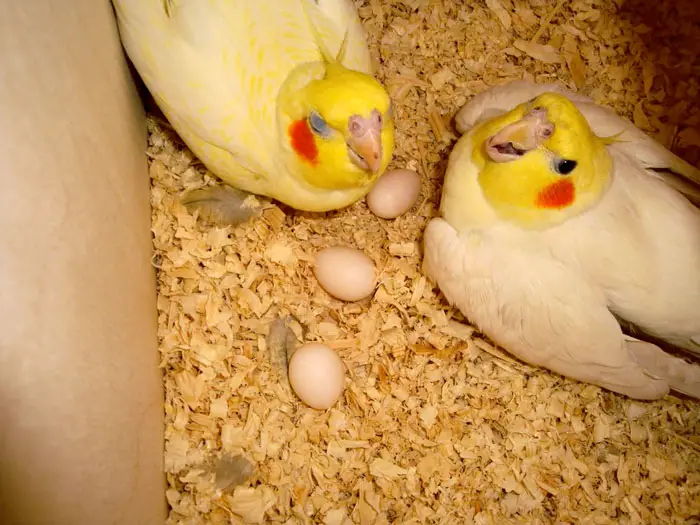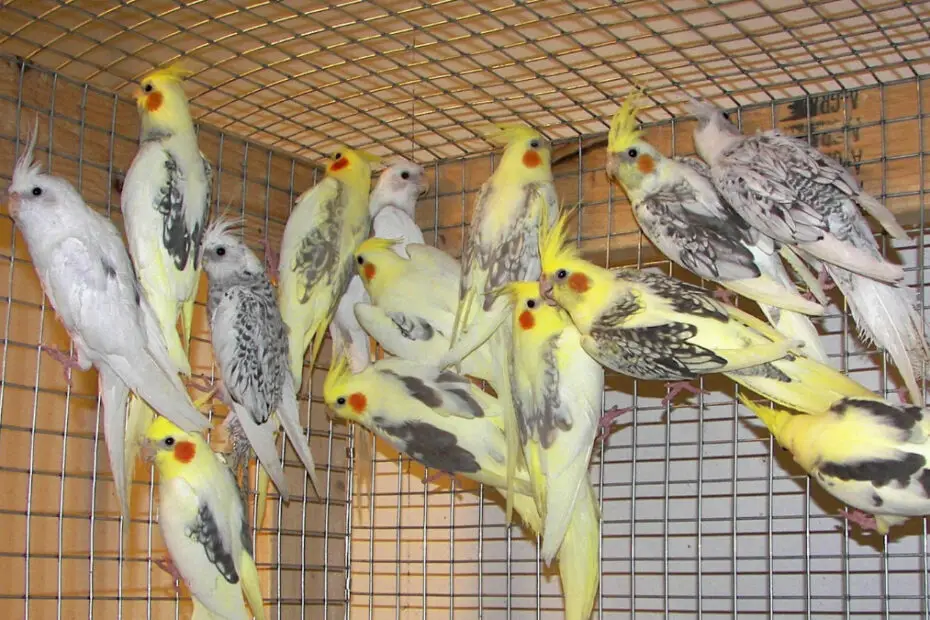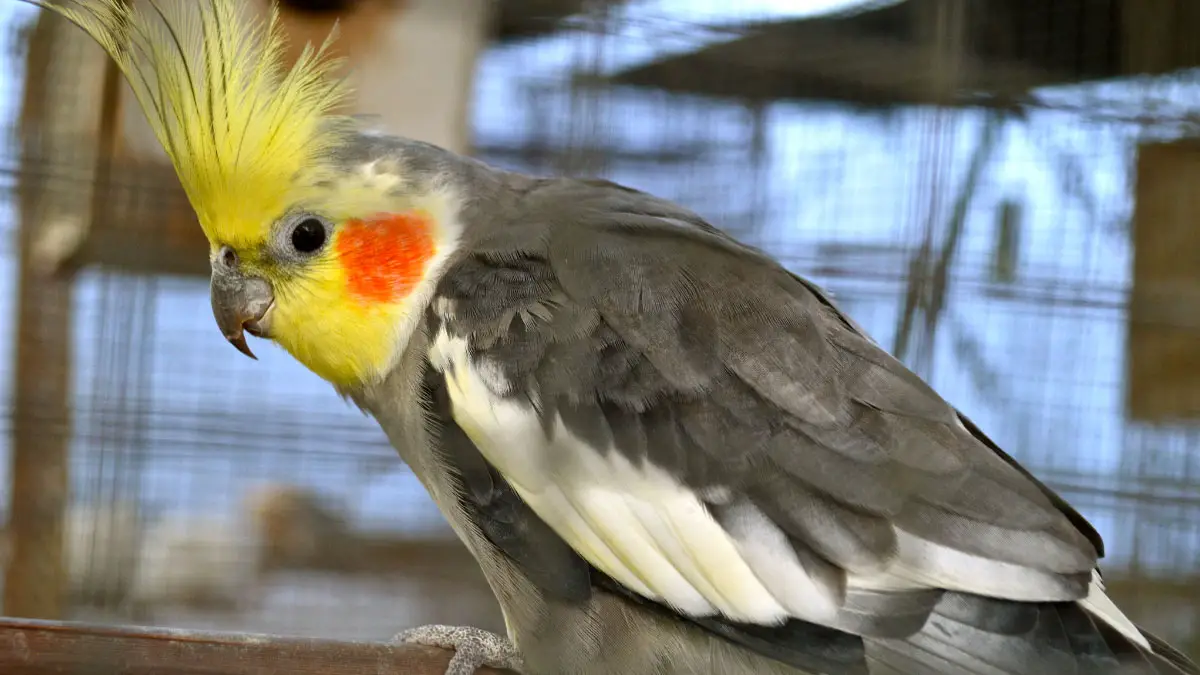Cockatiels are fun birds that any bird enthusiast enjoys keeping around. But what is more fun is breeding your hatchlings and watching them grow through the years. Breeding allows you to monitor and train the chicks as early as possible, adding their value in case you want to sell them.
One of the crucial factors when going through the breeding process is the health of the chicks. The cockatiels pair you use for breeding directly affects the health of the chicks. So the pair should be healthy, well-fed on nutritious foods, and, most importantly, unrelated to avoid problems with chicks.
Also, another important thing while breeding the cockatiels is diversifying the chick’s genetics. This is done by breeding pairs of different genetics, which prevent issues with the chicks. You also have a chance of creating cockatiel mutations through specific breeding.
The article provides a guide on how to breed cockatiels, from preparations to providing care for the chicks. You will also learn the common challenges breeders face, their solutions, and more bird breeding tips. So, read on.
Preparing for Breeding
The preparation phase is the most important in the whole breeding journey. At this point, you evaluate your capabilities in both time and money so you don’t get into complications later on.

One of the tips for successful cockatiel breeding is learning as much as possible about cockatiel behavior. Some crucial information includes when they breed, at what age, and their ideal environment. Other must-know information is about their diet during the breeding period among others.
Selecting a Breeding Stock
Selecting your breeding stock is another crucial and necessary step as it determines your breeding success. A breeding stock should be a group of healthy males and female cockatiels. An avian vet should check for any dormant disease in the birds.
One more thing to check when breeding the birds is their age. The male should be more than 18 months, while the female, 24 months. Younger couples can neglect the chicks.
The pair should also be unrelated, meaning they should not be siblings or relatives. Breeding a related pair can result in weak chicks or those with health problems. This is crucial information usually missed in most cockatiel breeding for beginners tutorials.
Diet for The Breeding Stock
Breeding birds should feed on a healthy diet to remain healthy and ready to breed. The females require a diet high in calcium for healthy eggs and to prevent problems during egg laying. As per avian nutrition, the bird should get all six necessary nutrients to be healthy.

The diet should include multi-grain bread, leafy greens, fruits, and vegetables. You can also provide a hard-boiled egg crushed with the shell for extra proteins. Birdseed mixes and grain diets can’t provide all the needed nutrients.
Breeding Cage and Nest Box
The pair will need a breeding cage with a compartment where they can build a nest. These types of cages are bought in a pet store or are home-built. However, if the pair has a bird cage already, you can create an extension and add the nest box.
An ideal breeding box is at least 12 inches wide and 12 inches long but can be bigger. Set the breeding box and add nesting materials like molted feathers or shredded paper.

Observe and Understand Cockatiel Breeding Behavior
With the breeding cage and box ready and the pair on a healthy diet, they should start to get ready to breed. A bonded pair would perch together and regularly groom each other in preparation. In the wild, the cockatiel breeding season is between August and December, but it can breed anytime in captivity.
Some cockatiel breeding behaviors to note include the male fluffing and making head bobbing motions. The female would regularly dip down and lift her rump in a kind of dance.
At this stage, the pair is ready, and finally, the mating will happen with the male mounting the female for about a minute. The male then flies away quickly and stays away from the female for some time.
Incubation
After preparing the cage for the breeding pair, provide them with an ideal diet. If they successfully mate, the incubation process begins. Like other avian breeding processes, the birds can incubate the eggs, but you can use an incubator.
The incubator has several advantages, including preventing egg loss through parental neglect and an unfavorable environment. So, to incubate the eggs, you have to correct them from the box. A cockatiel’s clutch size can include four to six eggs.
Recognizing When A Female Is Ready to Lay Eggs
Most female cockatiels are ready to lay eggs after two weeks from the time they mate. Proper cockatiel care means understanding your pet birds well. In this case, you can measure your bird’s weight because if it has a developing egg, it will weigh more.

The bird will also work more on the nest box and prepare it often. It will also release fewer droppings, and when it does, the dropping sizes will be larger than usual. A few days after observing these signs, your bird should lay eggs.
Setting Up the Incubator
After the cockatiel has laid eggs, it’s time to add them into an artificial incubator to begin hatching them. Most breeders use store-bought incubators, but some have also successfully incubated them using homemade ones.
Position the incubator in a less noisy room and have one more as a backup just in case the first one breaks down. You may also need to have a power backup just in case of an outage.
Setting Temperatures and Humidity
Once the eggs are ready in the incubator, you can set the temperature and humidity. According to research by the University of California, cockatiel eggs do best at temperatures of 99.5° F (37.5°C) and 56% humidity.
Temperatures lower than the listed risk producing chicks with abnormalities. On the other hand, higher temperatures can kill the developing birds in the eggs. Different humidity levels also affect the size of the air sac, and if ruptured, it can result in early death.
Egg Turning and Candling
Egg candling is a process where each egg is checked under a light to check the state of the embryo. During the first few days, the egg is a uniform bright white. After a week, the egg should have veins and movements.
Turn around the eggs at about 45° about six times daily to ensure evenness during incubation. Turning is a crucial step in the first three days but should be avoided in the last three days when the egg is about to hatch.

Potential Issues During Incubation and Their Solutions
Some potential problems when incubating the cockatiels include
- Embryo death – Embryo death can result from various factors, including too high temperature. To avoid the problem, ensure temperatures are within the required degrees.
- Egg rapture – if your spit bubbles within an egg, it can mean the shell is raptured, caused by poor handling. So, handle the eggs with care.
- Poor ventilation – More or less humidity can be a problem because too much can drown as the shell absorbs water from the humidity. Again, if too low, the chick can stick to the eggshell. Hence, ensure the humidity is just right.
Brooding and Chick Care
Within 18 and 20 days, the eggs will begin to hatch. They may also hatch a day earlier or a few days late, but this should not be concerning. If the egg is still not hatched, wait for around 28 days. Once the eggs hatch, the brooding process begins.
The hatchlings can start feeding as soon as they are hatched and feed at least eight times a day. For each feed, a one-day-old can take 1 ml of the formula, which increases within a few days to about 3 ml.
These baby cockatiels are not yet ready for any solid food, no matter how soft it looks. Therefore, avoid feeding cockatiel chicks anything other than the formula bought in a pet store.
Ideal Temperature and Humidity
Baby cockatiels don’t have feathers when they’re born and depend on the temperature in a room. Normally the mother sits on them and keeps them warm with her wings.
However, set the room temperature to about 96° Fahrenheit (35.5°C.) The humidity should be between 50%– 60% to favor the baby birds. However, observe the pets for any signs of temperature problems.
For instance, if the bird is panting and keeps its beak slightly open, it may be overheated. Also, observe for other signs, like if the bird is sweating or shaking from the cold.
Monitoring Chick Growth and Development
As the chicks continue to grow, one of your chick care tasks is to monitor them to determine whether they are developing well. The baby cockatiel’s eyes remain closed for the first week. By two weeks, the birds will have growing feathers on the wings and crest.

The number of times the chick eats daily reduces as they grow since their crop is developing and can hold more food. A four-week-old chick can eat at least four times a day. However, the portions increase too.
Preventing and Addressing Health Issues
At this hatchling age, chicks are most vulnerable to developing health problems. Yeast is the most common cause of health issues that usually result in chick death.
Yeast is a normal living environmental organism inside all living animals, including birds. Most times, when the bird is stressed, its body lowers immunity exposing it to yeast, like Candida albicans.
Therefore, avoid stressing the hatchlings, which you may do by simple actions, like when handling them or making loud noises. Other cockatiel health issues can be the result of poor nutrition. Raising healthy cockatiel chicks may involve regularly consulting an avian vet.
Weaning and Transition to Solid Foods
As baby cockatiels grow, their diet requirements change too. They go from hatchlings to fledglings which takes about five weeks and the owners can begin trying to wean them.
Wean the cockatiel with a nutritionally balanced diet. However, weaning should not happen all at once and should be done gradually while still feeding it on formula.
By eight weeks, the bird should be fully-fledged and also fully weaned. It should be able to forage for enough food to sustain itself without requiring a formula. Nevertheless, some birds may experience delayed growth and take up to ten weeks to wean.
Fledging and Beyond
Cockatiels begin fledging at five weeks, and you’ll watch them flapping their wings. Flying is through instincts, but if the bird has other already flying birds around, it can fly better.
You can help the bird by placing them on a high perch. However, some breeders favor wing clipping until the birds molt for the first time.
After weaning the cockatiels, it’s best to avoid helping them too much to encourage independence. Another way to encourage independence is by providing opportunities where the bird can forage. Chewable and shreddable materials can encourage activity.
Molting and Identifying Mutations
When the birds are older than six months, they go through their first molting process. They shed all their feathers through feather plucking, and the pin feathers already on their bodies turn to new colorful feathers. During this time, you can provide support by spraying water on them and allowing them to rest as much as they want.
After the new coat of feathers, you can identify their genders. The female will get barring on the underside of their wings and tail feathers, while males won’t. The male will also get a yellow face while the females remain muted grey.
Sexing cockatiels is mostly possible after the first molt, but if you want earlier, you can use DNA. A recessive pied mutation cockatiel will get white or yellow feathers on the back of the head and neck.
Preparing the Chicks for New Homes
Among the preparation steps before breeding cockatiels is ensuring they have a future home. The bird can be sold as early as two months, but some wait until they can tell the gender. You can create records for each chick on their breeding times, gender, and mutation, for future reference by the new owners.

Common Challenges and Solutions
Breeding cockatiels is not always a walk in the park, and breeders have reported several common problems. They include
Issues with breeding stock
Some of the problems with the breeding stock are with the breeding pair. Either one of the members in the group is unhealthy or unfit for the other. You can solve the issue by trying a new pair.

Infertile eggs
Another common problem is with the female laying infertile eggs. The issue can be in their diet, which could be lacking essential nutrients. However, the male may not be mating with the female because the female is not fully mature.
Offer healthy diets rich in nutrients like calcium and ensure the breeding pair is of the right age.
Chick mortality
There are a lot of possible causes for the issue of chick mortality. Improperly incubating the birds is one of them, followed by nutrition deficiency with the female before laying. If the eggs are artificially incubated, ensure you do it right in the correct temperature and humidity.
Aggression towards chicks
Another issue when breeding is the parents being aggressive toward the chicks. This mostly happens when you breed a pair too young to be parents. Choose a responsible breeding group at least two years old to avoid aggression issues.
Resolving potential health issues
Other problems are health-related and are solved by a quick visit to an avian veterinarian. So, before breeding a cockatiel pair, get them checked through tests like gram stains to determine possible underlying health problems.
Conclusion
After reading the article, you should be able to breed cockatiels and care for them. Some of the main points discussed include;
- Selecting a healthy stock and providing a healthy diet is a necessary step
- The proper temperature to incubate cockatiels is 99.5° F
- The chicks can be weaned by eight weeks, a time when most also fly
- Infertile eggs and chick mortality are among the common challenges when breeding and may be linked to poor nutrition.
Remove the male after the pair breeds to prevent overbreeding. Also, age is important because other than the younger pair becoming irresponsible parents, the female may develop health problems.
However, while the guide has covered most information on breeding, there is more to learn. Visit official research pages and cockatiel forums for more information on breeding and raising young birds.







